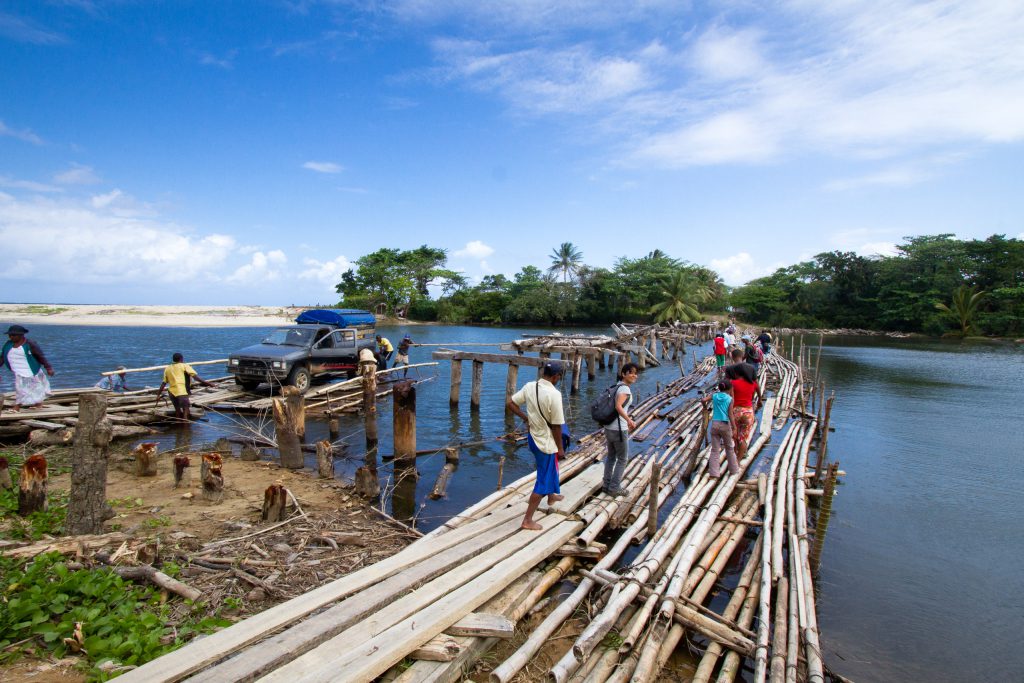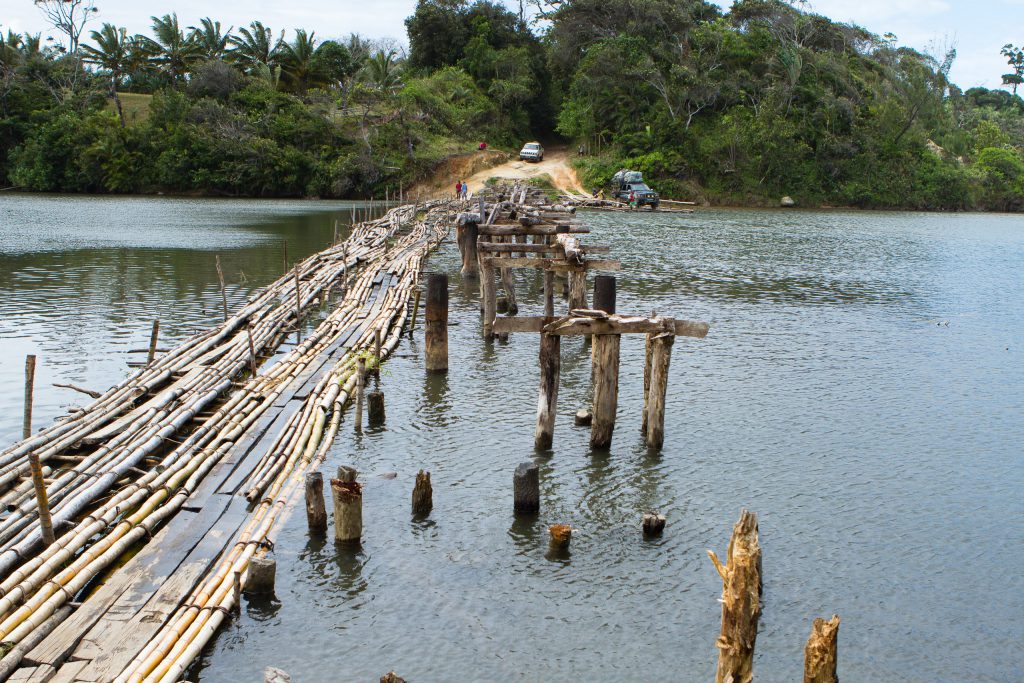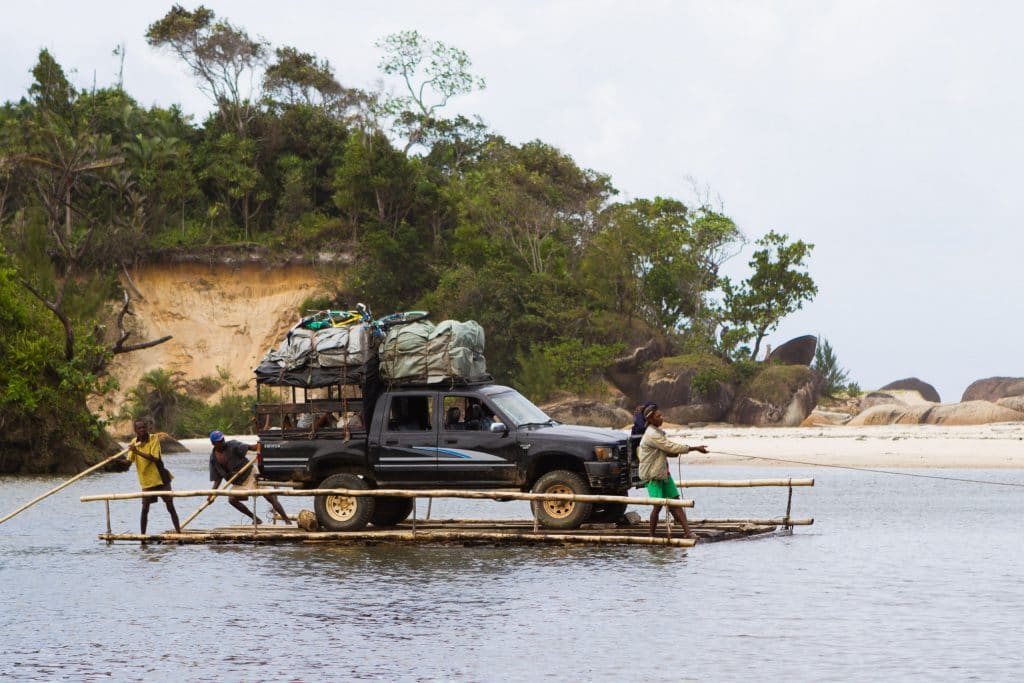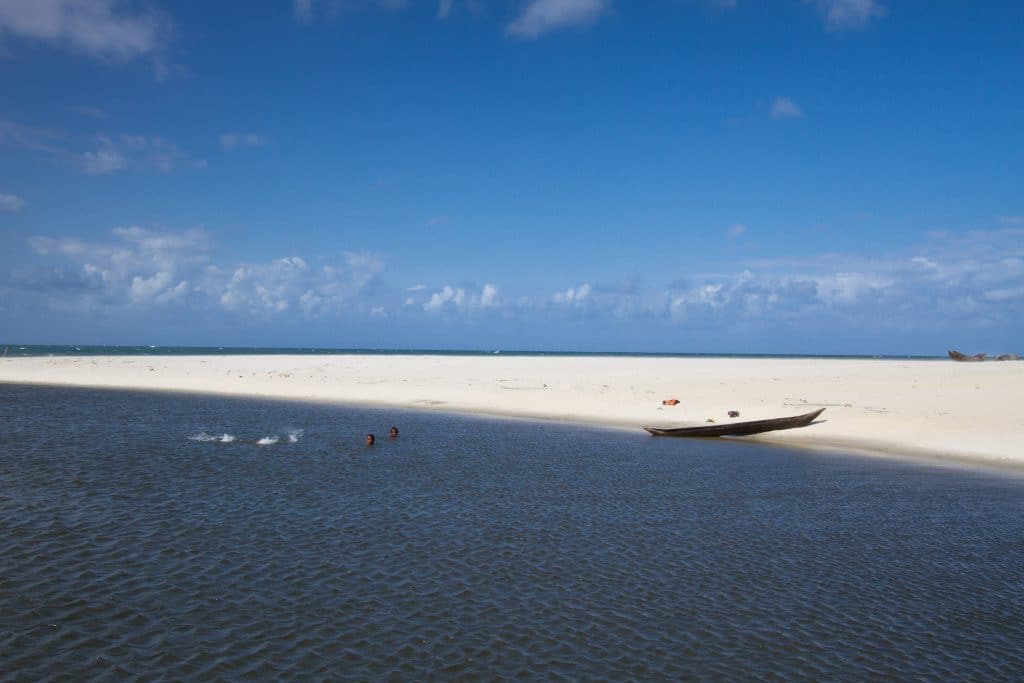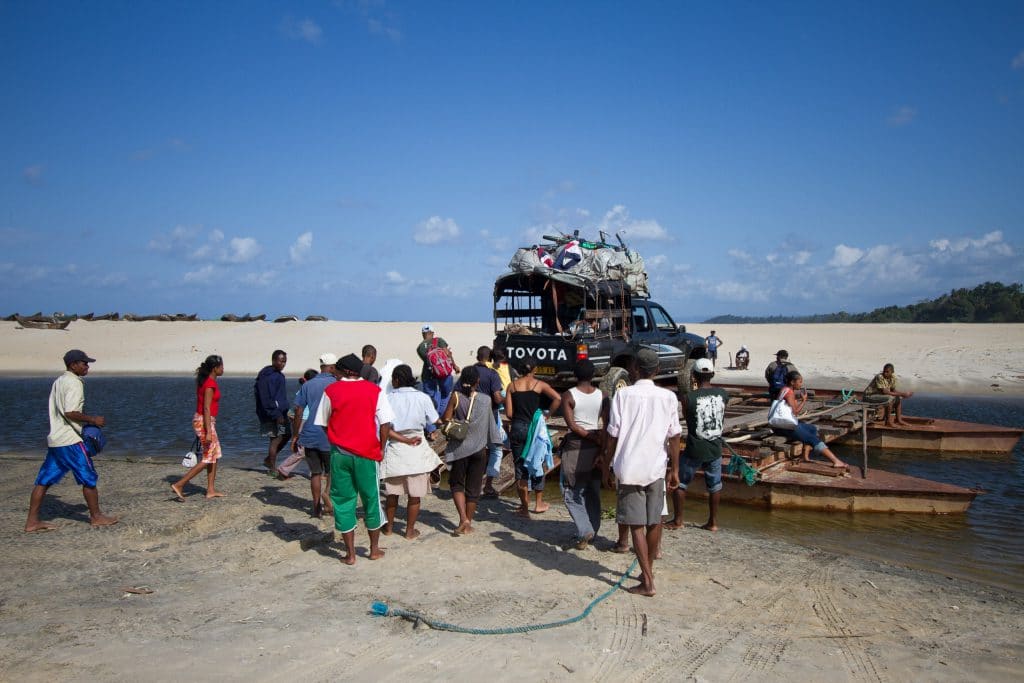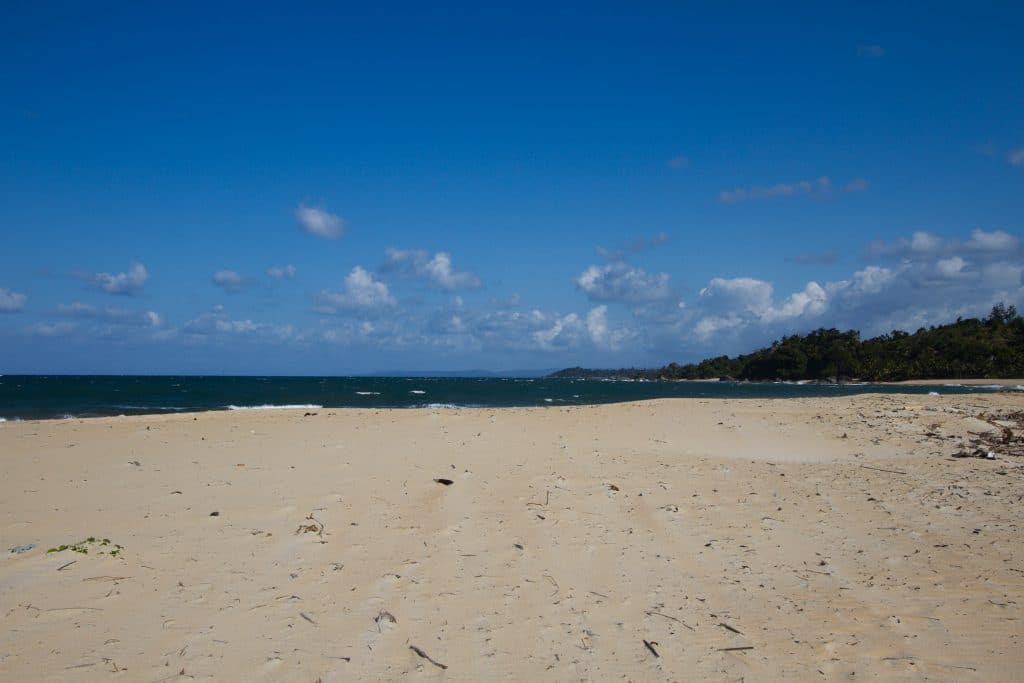We had been warned! The “road” hardly deserved the name, and the journey on the back of the pickup truck would be cramped and painful. But all the warnings we had heard and read failed to prepare us for how tough the ten hour journey for the 114km from Maroantsetra to Mananara would be.
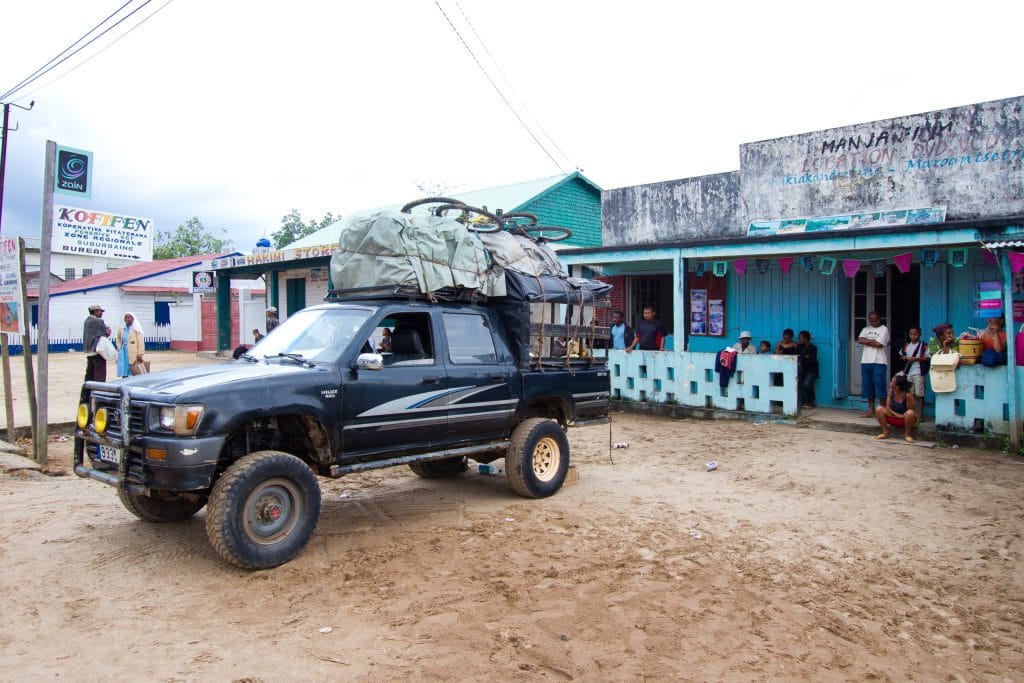
Alas, that was not the case. A few lucky ones who had booked sufficiently ahead got into the back seats of the driver cabin. The rest of us – with the whole floor of the pickup bed covered with luggage – somehow scrambled into the back, with legs folded and more or less on top of each other. Kazz and I were “lucky” enough and got to sit in the very back, with our legs dangling over the tailboard. At least we were able to look out.
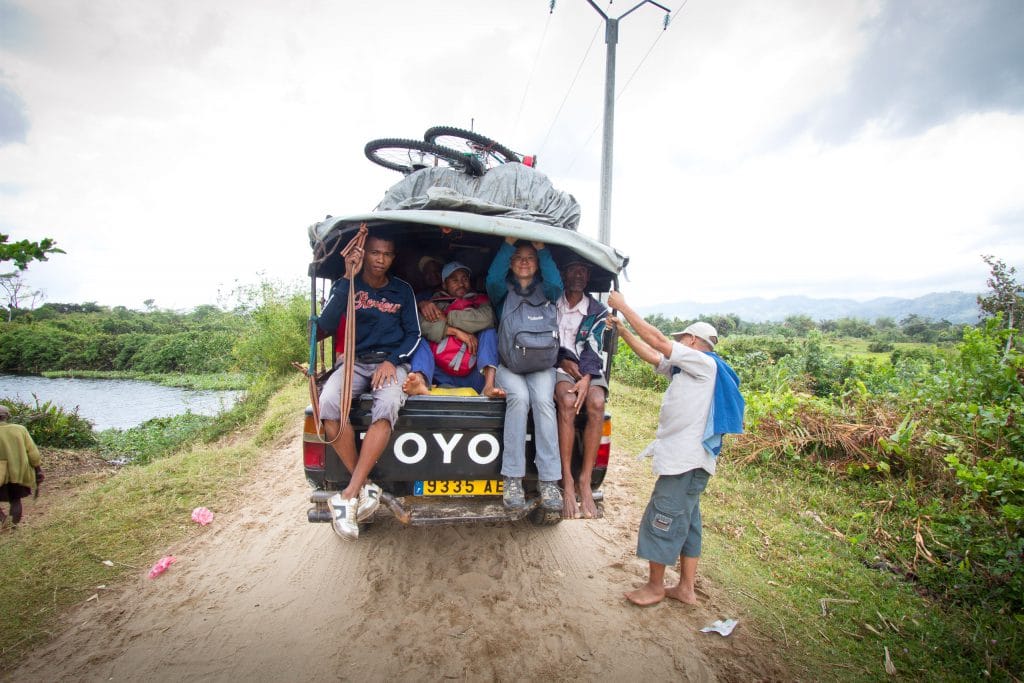
Thrown about, we were all jostling for something just to hold on. Behind us, in the dark, airless interior, the first female passengers were beginning to throw up, while in front of us, a guy standing on the bumper, clinging white knuckled to the railing, was there one minute and gone the next: he had slipped at a big bump, fallen off, and got stuck in the mud.
Fortunately, we had been moving at little more than walking speed, and while the pickup just kept going, he simply picked himself up and caught up with us and jumped back on.
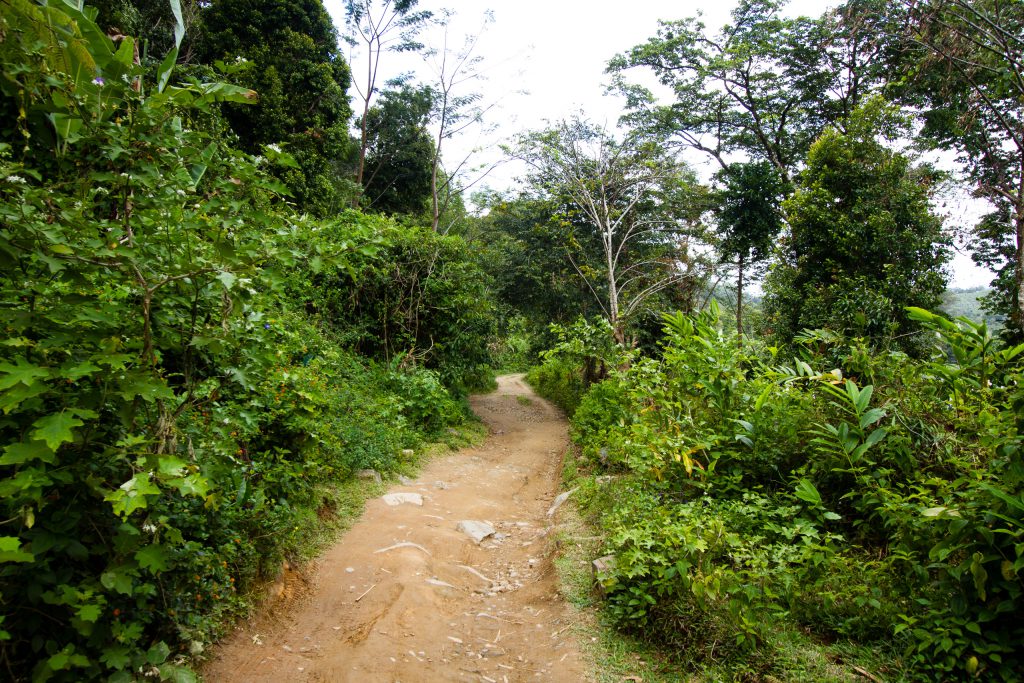
Soon, I was desperately looking forward to the next of these breaks: with my heavy camera bag resting on my legs (there was no space to put it), the tailboard was cutting into my thighs, which were becoming sorer with each agonizingly slow kilometer. But I’m sure I was not the only one in pain. Behind me, there was an older Malagasy man with skinny legs, his knees pressed against chest, while others had children sitting on their laps. How they managed to bear it was beyond my comprehension and Kazz quipped that instead of “taxi brousse” it should be called “taxi bruise.”
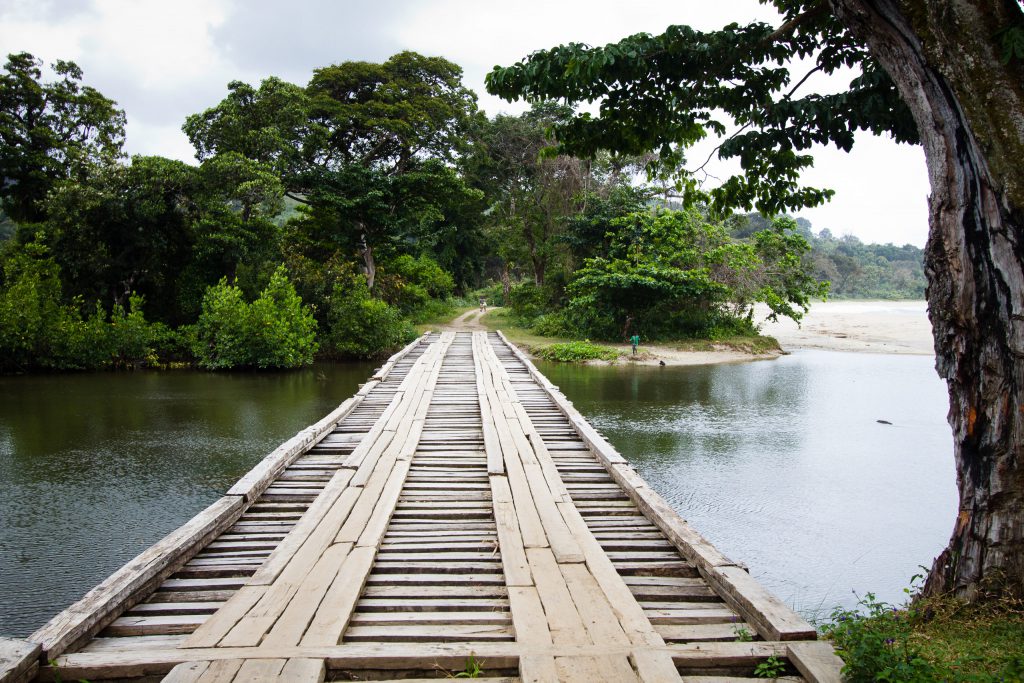
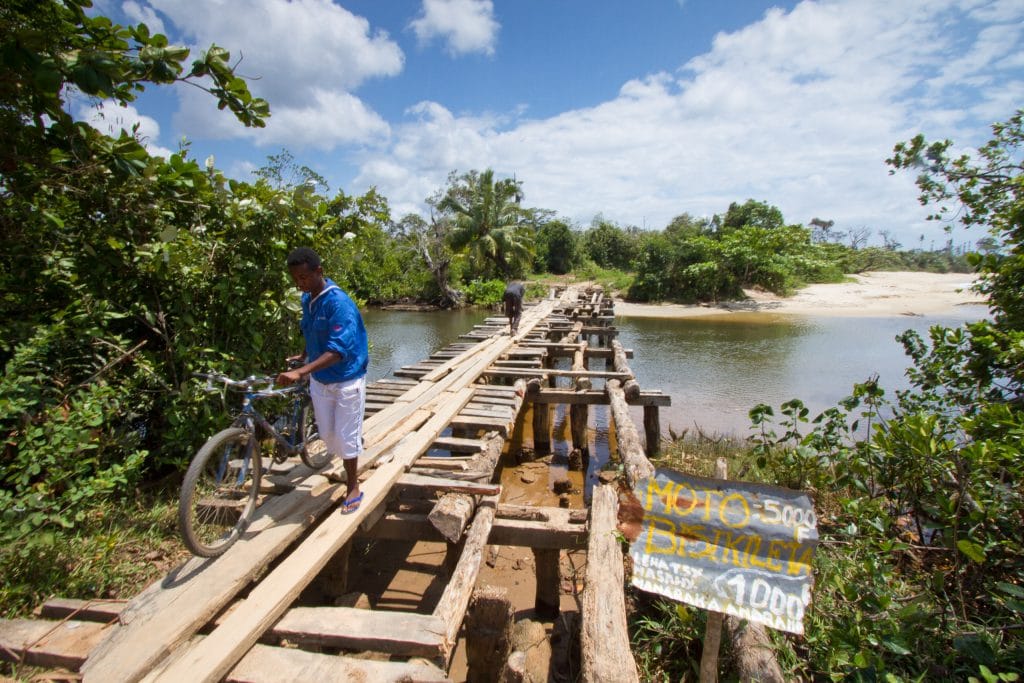
River crossings continued to be the highlights – and not only for the relief from pain they afforded. Some were pretty straightforward: solid cable ferries made of steel; you get off the car, onto the ferry, and stretch your legs. Others were much less so. On one occasion, passengers had to cross a 100m wide river on bamboo poles tied together floating half submerged in the water, while the car crossed on a bamboo raft, pushed and pulled by human muscle only.
